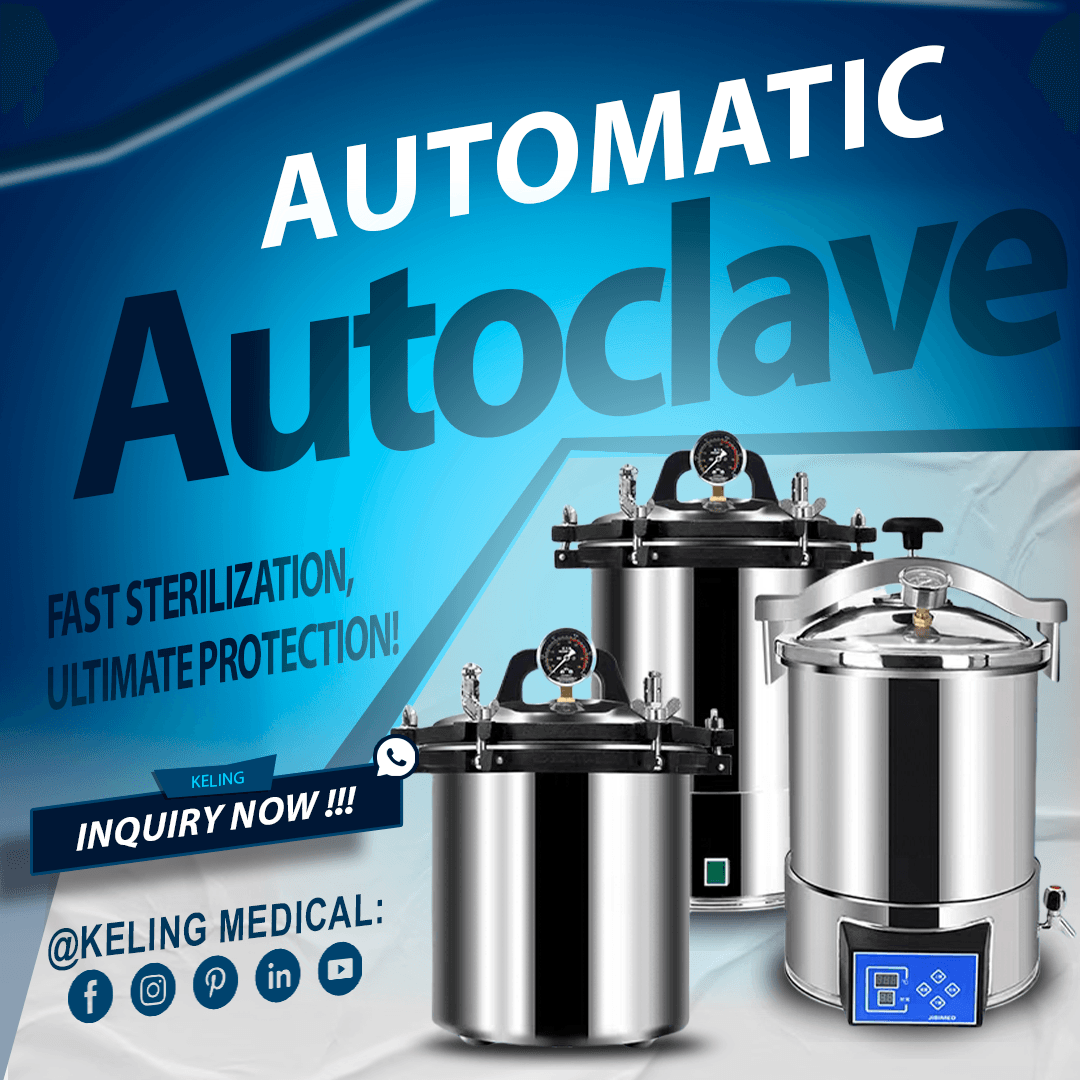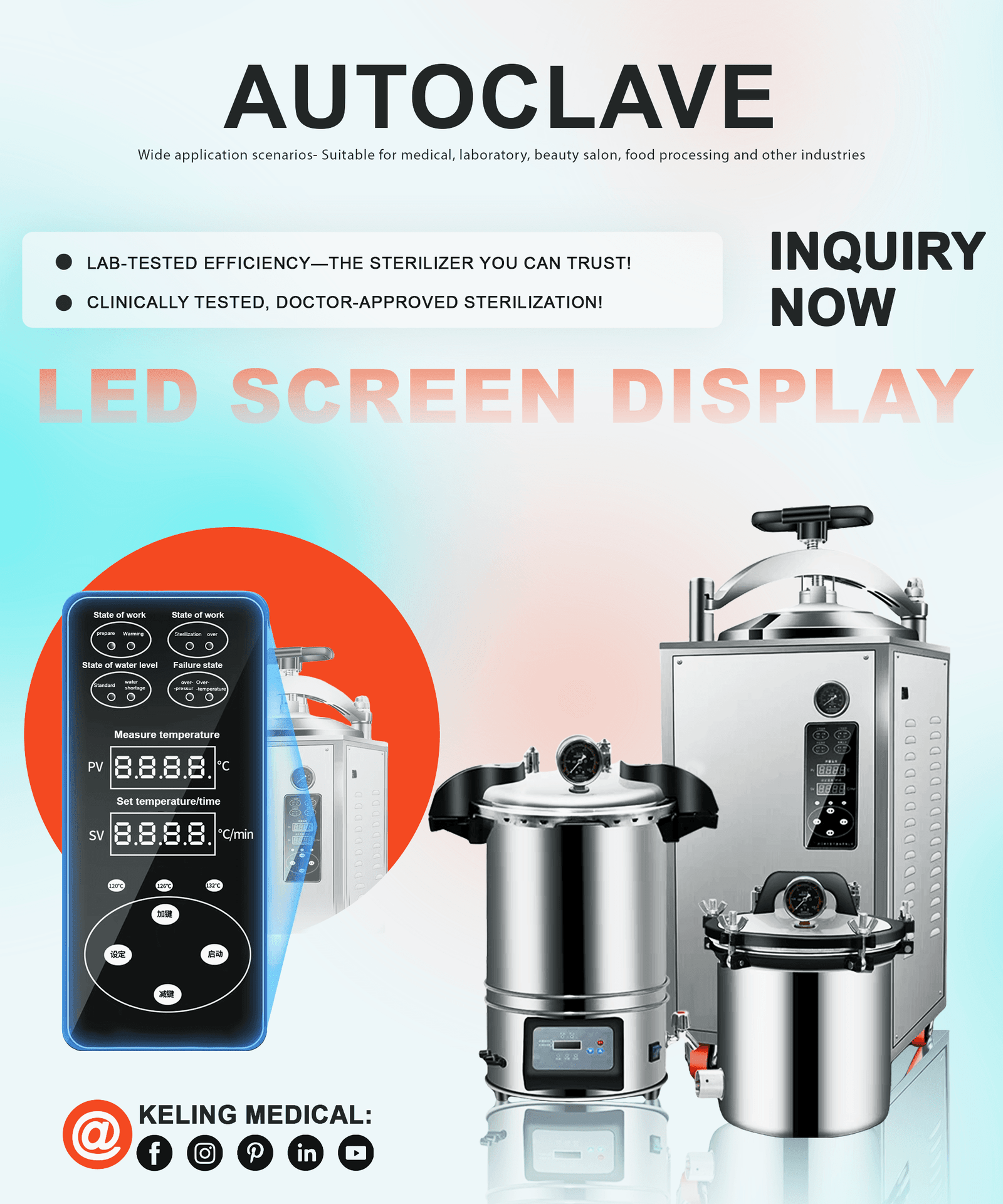
The dental sterilizer machine remains essential for purging dental instruments of bacteria, viruses, and other harmful pathogens. The machines ensure the safety of reusable tools for use by preventing cross-contamination and maintaining a sterile environment.
The article examines dental sterilizer machines by detailing their different types and explaining their operational methods while outlining best practices for usage. This guide will show medical equipment distributors, dealers, and procurement professionals how dental sterilizer machines benefit dental practices.
Infection control in dental practices requires sterilization as an essential practice. Medical professionals reuse dental instruments which can spread infections between patients if proper sterilization practices are not followed.
Through sterilization dental instruments become free from dangerous microorganisms which makes them safe for patient use.
The correct sterilization procedures minimize infection risks for dental staff and professionals.
Health authorities enforce rigorous sterilization guidelines for dental practices. Dental sterilizer machines allow dental offices to meet health regulations requirements.
Patients feel reassured by clean and sterile conditions while dental clinics gain a better reputation because of this environment.
Dental practices utilize various sterilizer machines that offer unique benefits and specific uses.
Autoclaves serve as the primary sterilization devices used in dental offices. They use high-pressure steam to kill microorganisms.
Instruments are placed in a sealed chamber.
High-pressure steam enters the system to achieve temperatures between 121°C and 134°C.
The steam enters the instruments and eliminates bacteria, viruses and spores.
Highly effective against all types of microorganisms.
Suitable for most dental instruments.
Videi draudzīgs.
Nav piemērots karstumjutīgiem materiāliem.
Dry heat sterilizers achieve sterilization through elevated temperatures that lack moisture.
The sterilization process involves exposing instruments to temperatures between 160°C and 190°C during a predefined time period.
This sterilization method is best suited for instruments that would corrode when exposed to moisture.
No risk of rusting or corrosion.
Garāki sterilizācijas cikli salīdzinājumā ar autoklāviem.
Limited to heat-resistant instruments.
Instrument sterilization occurs through liquid or gaseous chemical methods.
The sterilization process involves either submerging instruments in a chemical solution or exposing them to sterilizing gas.
Piemērots pret karstumu jutīgiem instrumentiem.
Efektīvs sarežģītiem instrumentiem ar grūti sasniedzamām vietām.
Handling these chemicals requires caution because they are toxic.
Longer processing times.
The effective sterilization process depends on the correct operation of dental sterilizer machines.
Sagatavošana
Remove all debris and organic matter from instruments during the cleaning process.
Ensure that all instruments are dry before sterilization because moisture can interfere with the process.
Loading the Sterilizer
Arrange instruments in sterilization pouches or trays.
Place instruments with adequate space between them so that steam or heat reaches every surface.
Cikla iestatīšana
Select the suitable sterilization cycle by considering both the instrument types and the sterilizer model you are using.
Set the required temperature and duration.
Running the Cycle
Initiate the sterilization cycle and stay until the process finishes.
Unloading and Storing
Allow instruments to cool before handling.
Maintain sterility of instruments by storing them in areas that are both clean and dry.
Perform regular sterilizer maintenance by cleaning and servicing it according to the manufacturer’s specifications.
Utilize distilled water for steam sterilizers to avoid mineral buildup.
Implement biological and chemical indicators to confirm sterilization process effectiveness.
All staff members should receive training in correct sterilization procedures as well as how to operate sterilization equipment.
Dental sterilizer machines are indispensable tools for maintaining a safe and hygienic environment in dental practices. By choosing the right sterilizer and following best practices, dental clinics can protect patients and staff, comply with regulations, and build trust with their clients.
For more information on dental sterilization equipment, check out our related articles:
If you’re looking for high-quality dental sterilizer machines, Keling Medical offers a wide range of reliable and efficient options.
A dental sterilizer machine is a device used to sterilize dental instruments by eliminating bacteria, viruses, and other microorganisms.
The main types of dental sterilizers are steam sterilizers (autoclaves), dry heat sterilizers, and chemical sterilizers.
Dental instruments should be sterilized after each use to ensure patient safety and compliance with health regulations.
Most dental instruments can be sterilized in an autoclave, but heat-sensitive items may require chemical sterilization.
You can find a variety of dental sterilizer machines on Keling Medical tīmekļa vietne.
Lai iegūtu vairāk informācijas vai uzzinātu par mūsu produktiem, sazinieties ar mums:
E-pasts: inquiry@shkeling.com
WhatsApp: Noklikšķiniet, lai tērzētu
Tīmekļa vietne: https://autoclaveequipment.com/

Ievads Slimnīcās izmantotās autoklāvmašīnas ir viens no svarīgākajiem ieguldījumiem veselības aprūpes infrastruktūrā, jo tās kalpo kā pirmā aizsardzības līnija pret infekcijām, kas saistītas ar veselības aprūpi. Sarežģītas sterilizācijas iekārtas ir

Autoklāvēšanas process ir būtiska sterilizācijas prakse, ko izmanto medicīnas, laboratoriju un pētniecības iestādēs, lai efektīvi sterilizējot aizsargātu stikla izstrādājumus un instrumentus. Augstspiediena tvaiks iznīcina patogēnus šīs procedūras laikā.

Autoklāvēšanas process ir būtiska sterilizācijas prakse, ko izmanto medicīnas, laboratoriju un pētniecības iestādēs, lai efektīvi sterilizējot aizsargātu stikla izstrādājumus un instrumentus. Augstspiediena tvaiks iznīcina patogēnus šīs procedūras laikā.

Autoklāvēšanas process ir būtiska sterilizācijas prakse, ko izmanto medicīnas, laboratoriju un pētniecības iestādēs, lai efektīvi sterilizējot aizsargātu stikla izstrādājumus un instrumentus. Augstspiediena tvaiks iznīcina patogēnus šīs procedūras laikā.

Autoklāvēšanas process ir būtiska sterilizācijas prakse, ko izmanto medicīnas, laboratoriju un pētniecības iestādēs, lai efektīvi sterilizējot aizsargātu stikla izstrādājumus un instrumentus. Augstspiediena tvaiks iznīcina patogēnus šīs procedūras laikā.
Autoklāvēšanas process ir būtiska sterilizācijas prakse, ko izmanto medicīnas, laboratoriju un pētniecības iestādēs, lai efektīvi sterilizējot aizsargātu stikla izstrādājumus un instrumentus. Augstspiediena tvaiks iznīcina patogēnus šīs procedūras laikā.